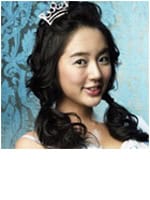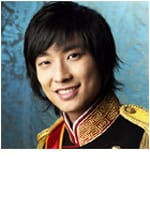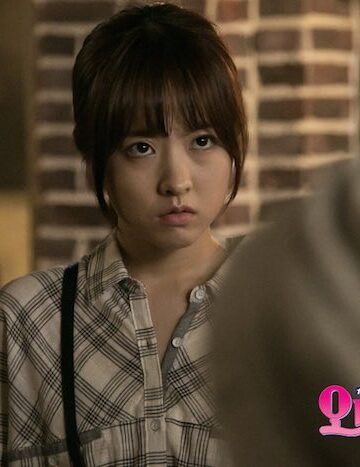Princess Hours (also known as Goong) is a 2006 South Korean romantic drama that blends palace politics with high school romance, all wrapped up in a dreamy alternate universe. Set in a fictional modern-day Korea where the monarchy still exists, the show tells the story of an ordinary girl who is suddenly thrust into royal life.
It combines fairy tale fantasy with coming-of-age themes, offering a unique mix of tradition, modernity, and teenage love. With its iconic aesthetic, whimsical soundtrack, and emotionally rich storyline, Princess Hours has cemented its place as a K-drama classic.
This review breaks down the drama’s plot, characters, production quality, cultural themes, and viewer impact — all without spoiling the key twists. Whether you’re exploring older K-dramas or looking for a royal romance with substance and style, this guide is here to help you decide if Princess Hours deserves a spot on your watchlist.

🎞️ Synopsis
Plot Summary
Imagine a version of present-day South Korea where the monarchy is still alive and well. Now imagine being told, as an ordinary high school student, that you are betrothed to the crown prince due to an agreement made between your grandfathers decades ago. That’s the situation Shin Chae-kyeong finds herself in. Her life turns upside down when she’s forced to leave her modest, chaotic household and move into the structured, pressurized world of the royal palace.
Crown Prince Lee Shin, cold and distant at first, is also adjusting to the burden of duty, and the two struggle to find common ground. Their marriage begins as a political obligation but soon becomes entangled with feelings, jealousy, family secrets, and the ever-watchful eye of the public. Without revealing too much, the heart of the story lies in how two young people navigate unexpected responsibilities, their growing relationship, and the contrast between their worlds.
🎥 Production Details
Director & Writer
The series was directed by Hwang In-roi and written by In Eun-ah, adapted from the popular manhwa (Korean comic) by Park So-hee. The manhwa ran from 2003 to 2012, and the drama adaptation was one of the earliest examples of turning comics into K-dramas, paving the way for many others. Hwang In-roi's direction leans into visual elegance, using the royal setting to its fullest potential with elaborate costumes, lush palace interiors, and cinematic flourishes.
Cast
- Yoon Eun-hye as Shin Chae-kyeong – This was a breakout role for the former Baby V.O.X idol. She perfectly captures the awkward, expressive energy of a normal girl navigating royal rules, social pressure, and a confusing first love.
- Ju Ji-hoon as Crown Prince Lee Shin – In his acting debut, Ju Ji-hoon plays the stoic, emotionally guarded prince with subtlety and depth. His cold demeanor evolves beautifully as his layers are peeled back.
- Kim Jeong-hoon as Yul – The prince’s cousin and a rival to both the throne and Chae-kyeong’s heart. His character adds complexity to the central relationships and presents a strong second-lead presence.
- Song Ji-hyo as Hyo-rin – A graceful ballerina and Shin’s first love, her role introduces themes of sacrifice, ambition, and what it means to choose between love and duty.
Network & Episodes
The drama aired on MBC from January to March 2006 and consists of 24 episodes. It was a mid-week primetime hit, achieving impressive ratings and a lasting legacy, especially among international audiences.


📝 Detailed Analysis
Plot Development
Princess Hours takes a slow-burn approach. The first few episodes establish the world, the royal rules, and the comedic clumsiness of Chae-kyeong trying to adapt. As the story progresses, the emotional tone deepens. Expect a shift from playful fish-out-of-water scenarios to more introspective conflicts around identity, tradition, and responsibility. The pacing allows viewers to fully immerse themselves in the emotional growth of the characters, even if it feels a bit drawn out at times.
This drama doesn't rely heavily on plot twists. Instead, it builds tension through relationships, misunderstandings, and personal evolution. The storyline is cohesive, steadily tying back personal choices to bigger questions of duty and destiny.
It’s more about emotional realism in a fantastical setting than shocking revelations, which gives it a unique tone among palace dramas.
Characterization
The strength of Princess Hours lies in how it develops its characters through nuance. Chae-kyeong is not a one-dimensional plucky heroine; she’s messy, lovable, naive, and surprisingly wise when it counts. Watching her evolve from a reluctant bride to someone who genuinely engages with her role is satisfying and believable.
Lee Shin’s character arc is even more dramatic. His cold, perfectionist nature masks a wounded, lonely core. His journey is subtle but powerful, and his chemistry with Chae-kyeong evolves naturally over time.
The second leads, Yul and Hyo-rin, are equally well-developed. Yul’s charm is undercut by ambition and resentment, making him both sympathetic and frustrating. Hyo-rin brings a touch of melancholy and elegance, never descending into a villain role, but rather portraying someone caught between past affection and present regret.
Themes and Messages
The drama explores several timeless themes: the weight of expectation, the meaning of family, and the clash between personal freedom and social obligation. It also examines what it means to grow up — to move from selfishness to empathy, from fantasy to grounded love.
One standout message is the idea of duty versus desire. Each character must decide whether to follow their heart or fulfill their role. For younger viewers, it might feel like a fairy tale; for older ones, it’s a meditation on maturity. Another underlying theme is how relationships are built not on grand gestures, but on shared experiences and emotional honesty.
Cinematography and Soundtrack
The aesthetics of Princess Hours are some of the most memorable in K-drama history. The set design, costumes, and color palettes are rich and regal. Everything about the palace, from its rituals to its decor, is designed to immerse you in a believable alternate monarchy.
The cinematography favors soft lighting and elegant framing, adding to the storybook quality. Even the transitions are whimsical, often animated or stylized to match the manhwa roots.
The soundtrack is dreamy and emotionally resonant. Songs like "Perhaps Love (Sarangin Ga Yo)" by HowL and J contribute significantly to the atmosphere. Instrumentals blend traditional Korean elements with modern orchestration, enhancing both lighthearted and melancholic scenes.
🪭 Cultural Context
The concept of a modern-day Korean monarchy may be fictional, but it cleverly uses this premise to examine real societal expectations. The strict palace protocols, the generational weight of royal legacy, and the limitations placed on personal freedom mirror broader Korean themes around family hierarchy, social image, and collectivism.
There are also layers of commentary on media scrutiny and public life. As Chae-kyeong becomes a public figure, the pressure she faces reflects real-world issues of celebrity culture and national expectations on women in the spotlight.
At the time of airing, Princess Hours also sparked fashion trends in Korea, with Chae-kyeong’s school outfits and palace dresses becoming aspirational looks for fans.
💭 Comparisons
- Boys Over Flowers (2009): Both dramas feature an ordinary girl entering a world of wealth, dealing with cold male leads and complicated love triangles. Princess Hours is slower-paced and more introspective, while BOF leans into high drama.
- The King: Eternal Monarch (2020): Another drama exploring an alternate monarchy in Korea. While The King is more sci-fi, both explore themes of duty and destiny.
- My Princess (2011): A lighter rom-com take on modern royalty, where an ordinary woman discovers she’s a long-lost princess.
If you love arranged marriage stories with real emotional payoff, Princess Hours delivers it with elegance and emotional depth.
Personal Impressions
One of the standout aspects of Princess Hours is how it balances fantasy and reality. You’re transported into a fictional palace setting that feels fully lived-in, yet the emotional conflicts remain relatable. The drama's greatest strength is the slow but believable transformation of the central couple’s relationship, supported by complex second leads and a strong ensemble.
If there’s a weakness, it might be the pacing. The show takes its time building up the emotional tension, and while that makes the payoff stronger, it may feel slow to viewers used to fast-moving plotlines. Some episodes focus more on royal politics than romance, which could test your patience if you’re mainly here for the love story.
Still, the charm of Princess Hours lies in its characters and visual world. The quiet glances, the reluctant moments of care, and the humor in adjusting to palace life all come together in a heartfelt and memorable way. It’s the kind of drama that lingers with you, not because of dramatic twists, but because of the emotional sincerity.
🧑 Audience Reception
When it aired in 2006, Princess Hours was a massive success, pulling in viewership ratings that peaked over 28%. It was a cultural moment in South Korea and became one of the early dramas to find widespread international success, helping spread the Korean Wave across Asia and beyond.
The show was particularly popular in Thailand, the Philippines, and Indonesia, and its DVD sales and merchandise soared. It won several MBC Drama Awards and cemented Yoon Eun-hye and Ju Ji-hoon as household names.
Fans praised its visuals, unique premise, and heartfelt romance. Over time, Princess Hours has gained nostalgic status. For many, it was their first K-drama and still holds a sentimental place in their hearts.
🤔 Thoughts
Princess Hours is a fairy tale that grows up as it goes. It starts off whimsical and light, but slowly unpacks deeper emotional layers that stay with you. It’s perfect for those who enjoy slow-burn romance, character growth, and a richly imagined world.
While it may not suit viewers looking for fast-paced drama or nonstop twists, it rewards your patience with heartfelt moments and lasting emotional payoffs. If you're ready for a royal love story that blends tradition, youth, and quiet transformation, Princess Hours is absolutely worth the watch.





Comments
No Comments